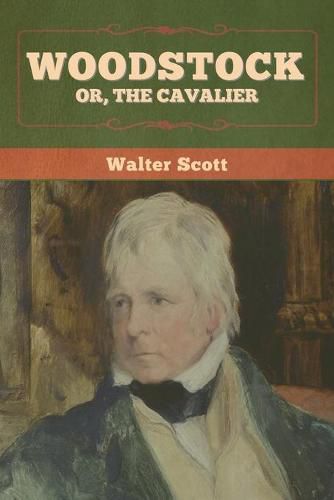Readings Newsletter
Become a Readings Member to make your shopping experience even easier.
Sign in or sign up for free!
You’re not far away from qualifying for FREE standard shipping within Australia
You’ve qualified for FREE standard shipping within Australia
The cart is loading…






This title is printed to order. This book may have been self-published. If so, we cannot guarantee the quality of the content. In the main most books will have gone through the editing process however some may not. We therefore suggest that you be aware of this before ordering this book. If in doubt check either the author or publisher’s details as we are unable to accept any returns unless they are faulty. Please contact us if you have any questions.
Woodstock, or The Cavalier. A Tale of the Year Sixteen Hundred and Fifty-one (1826) is a historical novel by Sir Walter Scott, one of the Waverley novels. Set just after the English Civil War, it was inspired by the legend of the Good Devil of Woodstock, which in 1649 supposedly tormented parliamentary commissioners who had taken possession of a royal residence at Woodstock, Oxfordshire. The story deals with the escape of Charles II in 1652, during the Commonwealth, and his final triumphant entry into London on 29 May 1660.
Scott began composing Woodstock at the very end of October 1825. He appears to have made rapid progress at first, but there were many interruptions during December and the second volume was not finished until 11 February 1826. He completed the final volume on 26 March.
The History of England by David Hume (1754-62), which Scott admired above all others, gave him most of what he needed for the historical background, though for many details he was able to draw on his profound acquaintance with the literature of the seventeenth century. For the goings-on at Woodstock Manor he was familiar with two accounts accepting a supernatural explanation in Satan’s Invisible world Discovered by George Sinclair (1685) and Saducismus Triumphatus by Joseph Glanvil (1700). He also knew, though not necessarily at first hand, the version of the story in The Natural History of Oxford-shire by Robert Plot (1677), adopting its more sceptical approach to the business. (wikipedia.org)
$9.00 standard shipping within Australia
FREE standard shipping within Australia for orders over $100.00
Express & International shipping calculated at checkout
This title is printed to order. This book may have been self-published. If so, we cannot guarantee the quality of the content. In the main most books will have gone through the editing process however some may not. We therefore suggest that you be aware of this before ordering this book. If in doubt check either the author or publisher’s details as we are unable to accept any returns unless they are faulty. Please contact us if you have any questions.
Woodstock, or The Cavalier. A Tale of the Year Sixteen Hundred and Fifty-one (1826) is a historical novel by Sir Walter Scott, one of the Waverley novels. Set just after the English Civil War, it was inspired by the legend of the Good Devil of Woodstock, which in 1649 supposedly tormented parliamentary commissioners who had taken possession of a royal residence at Woodstock, Oxfordshire. The story deals with the escape of Charles II in 1652, during the Commonwealth, and his final triumphant entry into London on 29 May 1660.
Scott began composing Woodstock at the very end of October 1825. He appears to have made rapid progress at first, but there were many interruptions during December and the second volume was not finished until 11 February 1826. He completed the final volume on 26 March.
The History of England by David Hume (1754-62), which Scott admired above all others, gave him most of what he needed for the historical background, though for many details he was able to draw on his profound acquaintance with the literature of the seventeenth century. For the goings-on at Woodstock Manor he was familiar with two accounts accepting a supernatural explanation in Satan’s Invisible world Discovered by George Sinclair (1685) and Saducismus Triumphatus by Joseph Glanvil (1700). He also knew, though not necessarily at first hand, the version of the story in The Natural History of Oxford-shire by Robert Plot (1677), adopting its more sceptical approach to the business. (wikipedia.org)